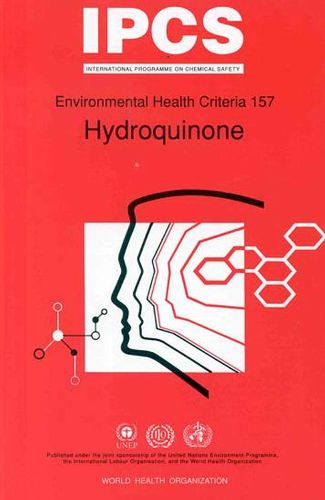Readings Newsletter
Become a Readings Member to make your shopping experience even easier.
Sign in or sign up for free!
You’re not far away from qualifying for FREE standard shipping within Australia
You’ve qualified for FREE standard shipping within Australia
The cart is loading…






Evaluates the risks to human health and the environment posed by exposure to hydroquinone, a chemical found in natural form in a number of plants and animals. Hydroquinone is manufactured for a large variety of commercial applications, including use as a developer in black-and-white photography in the production of medical and industrial X-ray films, in the manufacture of rubber antioxidants and antiozonants and antioxidants for food preservation and as a chemical intermediate for the production of agrochemicals and performance polymers. Hydroquinone and products containing hydroquinone are used in cosmetics and medical skin preparations as a depigmentation agent to lighten small areas of hyperpigmented skin and to treat various other disorders of pigmentation. The most extensive section evaluates studies of toxic effects in experimental animals and in vitro test systems. Particular attention is given to recent studies indicating that co-exposure to hydroquinone and various other phenolic compounds can greatly potentiate the toxic effects of the individual compounds causing cytotoxic, immunotoxic, and genotoxic effects. Although data from human studies were judged inadequate to evaluate carcinogenic potential, the report notes a well-documented association between exposure to hydroquinone and various skin disorders. Long-term exposure to airborne hydroquinone has been observed to cause a range of ocular disorders. Citing evidence that skin-lightening creams containing hydroquinone are frequently inadequately labeled and contain concentrations exceeding the permitted limit the report recommends that over-the-counter sale of these products be restricted. The report also calls for the development of health education programs to discourage the use of these creams for whole body skin lightening.
$9.00 standard shipping within Australia
FREE standard shipping within Australia for orders over $100.00
Express & International shipping calculated at checkout
Evaluates the risks to human health and the environment posed by exposure to hydroquinone, a chemical found in natural form in a number of plants and animals. Hydroquinone is manufactured for a large variety of commercial applications, including use as a developer in black-and-white photography in the production of medical and industrial X-ray films, in the manufacture of rubber antioxidants and antiozonants and antioxidants for food preservation and as a chemical intermediate for the production of agrochemicals and performance polymers. Hydroquinone and products containing hydroquinone are used in cosmetics and medical skin preparations as a depigmentation agent to lighten small areas of hyperpigmented skin and to treat various other disorders of pigmentation. The most extensive section evaluates studies of toxic effects in experimental animals and in vitro test systems. Particular attention is given to recent studies indicating that co-exposure to hydroquinone and various other phenolic compounds can greatly potentiate the toxic effects of the individual compounds causing cytotoxic, immunotoxic, and genotoxic effects. Although data from human studies were judged inadequate to evaluate carcinogenic potential, the report notes a well-documented association between exposure to hydroquinone and various skin disorders. Long-term exposure to airborne hydroquinone has been observed to cause a range of ocular disorders. Citing evidence that skin-lightening creams containing hydroquinone are frequently inadequately labeled and contain concentrations exceeding the permitted limit the report recommends that over-the-counter sale of these products be restricted. The report also calls for the development of health education programs to discourage the use of these creams for whole body skin lightening.